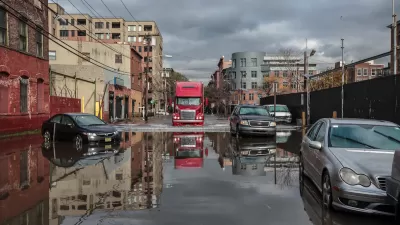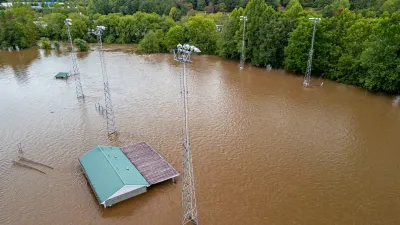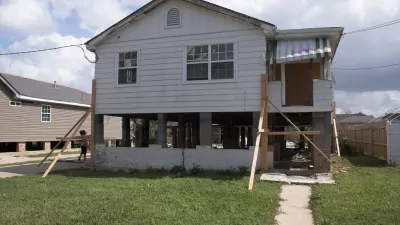Risk-management experts are seeking creative ways to finance resilience investments that prevent damage from natural disasters. Insurance markets, with their direct stake in protecting homes and businesses, can be key partners in this effort.
Broadly speaking, the world of insurance can be divided into two different sectors: private insurance companies and government-run programs. In the United States, the latter have long enticed policyholders to embrace resilience through a simple reward system: make risk-reducing upgrades to your building, and we’ll lower your insurance rates. This mechanism underlies much of the thinking about the power of insurance markets to drive resilience investments. Consider the National Flood Insurance Program (NFIP), America’s federal flood-insurance provider. Established in 1968, and today administered by the Federal Emergency Management Agency (FEMA), the NFIP partners with more than 80 private insurers to provide insurance to property owners if their communities agree to adopt ordinances that reduce the risk of flooding. For the NFIP, measures such as elevating the lowest floor above the base flood elevation qualify homeowners for reduced rates. Strategies like these can be hugely effective. As detailed in a 2015 report by the nonprofit Enterprise Community Partners, one multifamily building in Hoboken, New Jersey, installed floodwater vents and elevated the first floor to ground level. The $25,000 retrofit reduced the cost of flood insurance by 83%, with a return on investment of less than three years. (The owner originally paid $12,000 for $300,000 worth of coverage; after the retrofit, the premium dropped to $2,000 for $820,000 worth of coverage.)
FULL STORY: Can insurance markets jump start resilience?

Planetizen Federal Action Tracker
A weekly monitor of how Trump’s orders and actions are impacting planners and planning in America.

Maui's Vacation Rental Debate Turns Ugly
Verbal attacks, misinformation campaigns and fistfights plague a high-stakes debate to convert thousands of vacation rentals into long-term housing.

Restaurant Patios Were a Pandemic Win — Why Were They so Hard to Keep?
Social distancing requirements and changes in travel patterns prompted cities to pilot new uses for street and sidewalk space. Then it got complicated.

In California Battle of Housing vs. Environment, Housing Just Won
A new state law significantly limits the power of CEQA, an environmental review law that served as a powerful tool for blocking new development.

Boulder Eliminates Parking Minimums Citywide
Officials estimate the cost of building a single underground parking space at up to $100,000.

Orange County, Florida Adopts Largest US “Sprawl Repair” Code
The ‘Orange Code’ seeks to rectify decades of sprawl-inducing, car-oriented development.
Urban Design for Planners 1: Software Tools
This six-course series explores essential urban design concepts using open source software and equips planners with the tools they need to participate fully in the urban design process.
Planning for Universal Design
Learn the tools for implementing Universal Design in planning regulations.
Heyer Gruel & Associates PA
JM Goldson LLC
Custer County Colorado
City of Camden Redevelopment Agency
City of Astoria
Transportation Research & Education Center (TREC) at Portland State University
Jefferson Parish Government
Camden Redevelopment Agency
City of Claremont





























